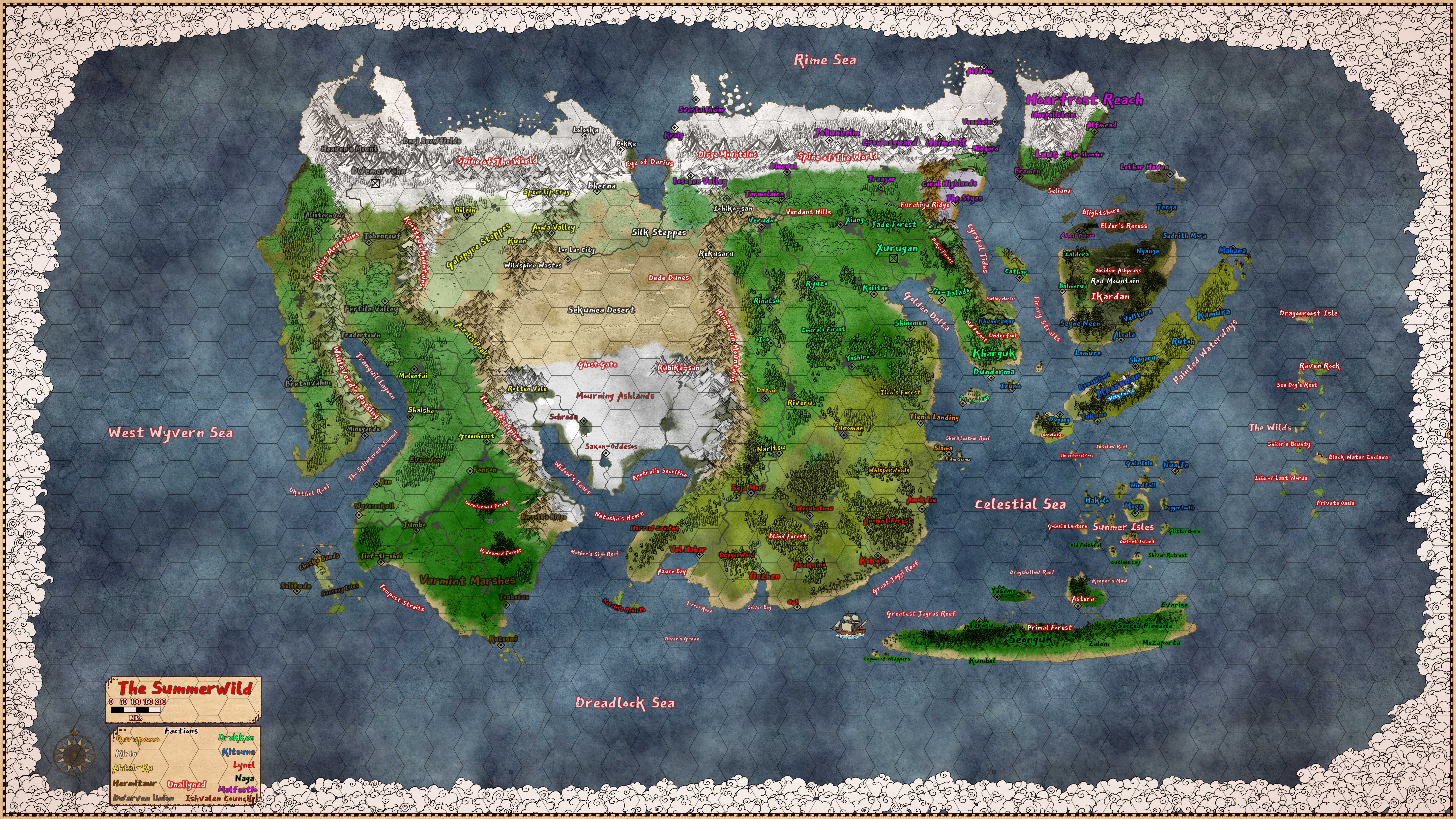Villain Strongholds
VILLAIN STRONGHOLDS
The villains of your campaign can—and if your players
are using these rules, probably should—have their own
stronghold, which grants them villain abilities which
will help them threaten PCs with strongholds. GMs,
you are encouraged to play fast and loose with what
counts as a stronghold for these purposes. Probably the
best answer for this is “wherever the bad guy keeps
their treasure.”
They also grant the villain’s minions 5
special abilities
under the premise that everyone trains harder and
fights better when they have a cool base.
Types of Villains and Minions
We could get very noodly indeed here with many kinds
and types of villains and minions, but I want to keep
it simple, so we go by the Rule of Three. Villains fall
into three broad categories—necromancer, shaman,
warlord—and minions fall into mindless servants,
rampaging hordes, and tactical phalanxes. This covers a
lot of ground, but obviously it doesn’t cover everything,
so feel free to adjust these terms and abilities to fit
your adventure.
Although it may seem obvious that a necromancer
would command mindless servants, it need not be so.
The abilities of the villains and minions aren’t designed
to synergize in any particular way. A necromancer
may command a savage horde, and a shaman may
command mindless servants. All the abilities will be
useful, without any combination turning the encounter
into a rout. At least, not on purpose!
Minions require a leader, though that leader need
not be present on the battlefield. Like the heroes’
stronghold abilities, these villain and minion powers
are granted through training and a connection with the
land itself. If the party finds itself fighting a band of
goblins who seem to be critting more often, it’s a sign
that they come from a nearby goblin stronghold and
serve some villainous leader! Probably a hobgoblin.
This is a dramatic way to introduce a villain and
hint to the players that there must be a nearby enemy
stronghold! The players fight undead or goblinoids or
cultists, or bandits and they seem much more...capable
than the normal beasties they’re used to fighting.
When these enemies charge into battle, they call out
something that sounds like it might be a name? Maybe
capturing one would be a good idea. Question it. Oops,
it didn’t survive long enough to spill the beans. Well, all
will become clear once the heroes penetrate the enemy
stronghold and fight the leader of these creatures.
5 This book assumes a “minion” is any flunky working for a villain. It doesn’t necessarily mean “a 1 hp enemy” from the 4E rules,
although I am a big fan of that rule.
Villain Examples
NECROMANCER
Lady Sariel the Vampire Queen, Cult Leader
Special Ability: As a reaction, make a Wisdom
check after a minion takes enough damage to kill it.
The DC is 8 plus the number of Hit Dice of the minion.
If successful, the minion does not die and drops to 1
hit point.
SHAMAN
Lizardfolk chieftain, Troll Shaman
Special Ability: Minions who can hear you gain
advantage on saving throws against spells and
magical effects.
WARLORD
Bonebreaker Dorokor, Bandit king
Special Ability: As a reaction, when a minion dies,
issue a command to your other minions. Those who can
hear you gain a reaction they can use to immediately
move again.
Minion Examples
MINDLESS SERVANTS
Undead, Oozes, Constructs
Special Ability: Gain an extra 10 feet of movement.
SAVAGE HORDE
Orcs, Goblins, Demons, Thugs
Special Ability: After moving at least 20 feet, the
next attack this minion makes is a critical hit on an
18–20.
TACTICAL PHALANX
Hobgoblins, Lizardfolk, Devils, Cultists, Bandits
Special Ability: If an enemy’s attack kills an ally,
all minions adjacent to that enemy can make an
opportunity attack against the enemy
Remove these ads. Join the Worldbuilders Guild









Comments